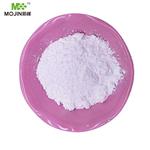Research
Indazoles are an essential class of heterocyclic compounds with many applications as biological and pharmaceutic agents. They have been extensively studied due to their interesting chemical and biological characteristics. Indazole belongs to the azoles family, which includes carbon, hydrogen and a nitrogen atom. Indazole has a heterocyclic structure made up of benzene and pyrazole rings. Indazole derivatives have a wide range of biological activities. For instance, indazole derivatives show vasorelaxant and anti-aggregator activities by stimulating NO release and increasing cGMP levels. K?ksal et al. investigated the in vitro inhibitory effects of some indazole derivatives. The inhibitory effects of molecules on enzyme activity were tested in vitro; Ki values were calculated using Lineweaver-Burk diagrams. Ki values were found as 252.78 ± 27.85 mM for 6-Chloro-1H-indazole. The results indicated that the indazole molecules had effective LPO inhibition. According to the results, the 6-Bromo-1H-indazole molecule had the strongest inhibitory effect, whereas the 6-Chloro-1H-indazole had the weakest inhibitory effect[1].
References
[1] Zeynep K?ksal, Zuhal Alim. “Lactoperoxidase, an antimicrobial enzyme, is inhibited by some indazoles.” Drug and Chemical Toxicology 43 1 (2020): 22–26.




